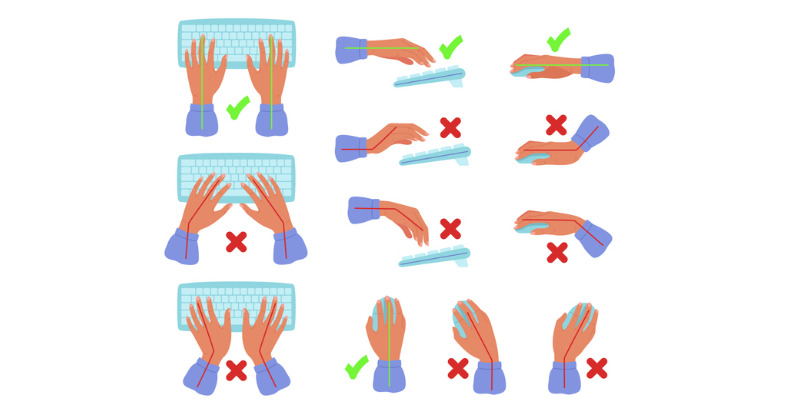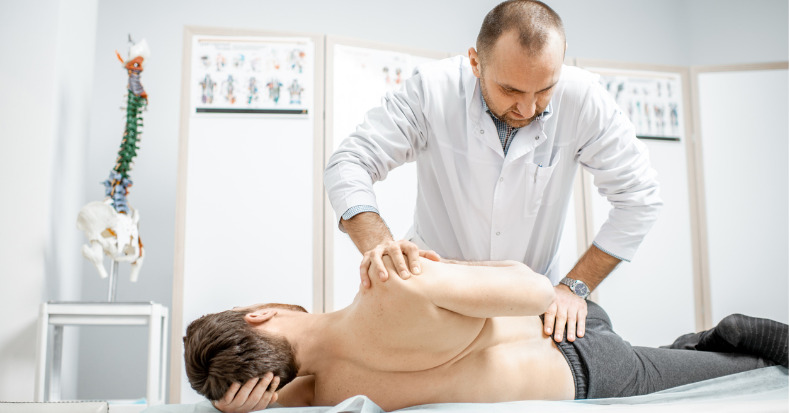Newest Articles
Whiplash-associated disorders (WAD) can be a challenging condition to manage, and the current data suggests that up to half of WAD patients may continue to experience pain and disability for up to a year following their car accident, slip and fall, or sports collision. Exercise therapy has long been considered a meaningful treatment option for [..]
Upper-cross syndrome (UCS) patients often demonstrate postural defects such as forward head posture, forward or rounded shoulders, and thoracic kyphosis. These postures are becoming more common as computers and device use assumes an even greater part of our lives and can lead to weakness in the muscles in the mid-back and front of the neck [..]
Hyaline cartilage is the slick, translucent tissue that lines joint surfaces and allows for the smooth movement of joints in the body, including the hip. If the structure or health of this cartilage is compromised, it can gradually wear away, leading to joint pain, stiffness, and disability. Eventually, the hip osteoarthritis patient may have no [..]
The wrist is very flexible, and the reason the wrist is so supple is because it’s made up of eight small carpal bones that are lined up in two rows of four bones each. Along with the transverse carpal ligament, these rows of carpal bones form an actual tunnel in which nine muscle tendons (and [..]
A Review of the Largest Studies Published on the Topic Including the Years 2022 and 2023
INTRODUCTION
Everyone will eventually die. Nearly everyone will have an ongoing relationship with a healthcare provider. Many will be actively under the care of a healthcare provider for their illness at the moment of their passing.
As a rule, healthcare [..]
Not only is low back pain a musculoskeletal condition that will affect nearly everyone at least once in their lifetime, but it also accounts for a significant portion of all healthcare expenditures. When an individual experiences low back pain, they have a variety of treatment options, including chiropractic care. While there is an abundance of [..]
More Evidence that Chiropractic Care Significantly Reduces the Use of Opioid Drugs
THE OPIATE/OPIOID PROBLEM
The government of the state of Oregon notes (1):
Opium is made from the poppy plant.
Opiates are compounds that can be purified directly from opium without modification. This includes morphine, codeine, methadone, and heroine.
Few people understand that dextromethorphan is an opiate. It is available in the [..]
Whiplash-associated disorder (WAD) is a condition characterized by a collection of symptoms that can arise after the sudden back-and-forth movement of the head and neck—most commonly from motor vehicle collisions. It’s estimated that 2-3 million Americans experience whiplash each year and the current data suggests as many as half may continue to experience ongoing, chronic [..]
As we age, the shock-absorbing disks that sit between the spinal vertebrae in the neck can become dehydrated, leading to a condition known as cervical spondylosis (CS). Due to the thinning and reduced flexibility of the disks in the neck, the patient will experience a limited range of motion which they may describe as stiffness. [..]
Shoulder injuries are common in athletes, especially those requiring overhead repetitive movements at high velocity and extreme range of motion. For example, shoulder injuries account for 19% of injuries to baseball players and nearly 40% of injuries to swimmers. Because a shoulder injury can sideline an athlete and even prematurely end their season, a current [..]
Carpal tunnel syndrome (CTS) is a condition the occurs when mobility of the median nerve is restricted as it passes through the wrist, resulting in symptoms that extend into parts of the hand including pain, numbness, tingling, and weakness. Generally, symptoms come on gradually but worsen and become more frequent over time. While most often [..]
Peanut butter is the creamy and ground form of dry roasted peanuts that’s enjoyed by millions of people around the world. Because peanut butter is typically 90% peanuts—the rest is a combination of additives to improve flavor, shelf life, and consistency—and peanuts are considered a healthy food, do those benefits extend to peanut butter, and [..]















